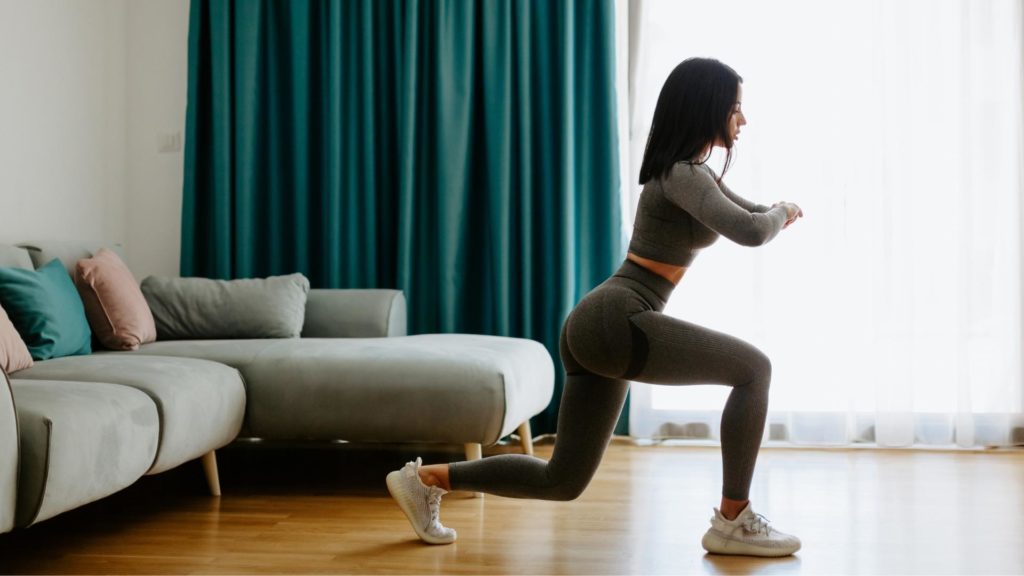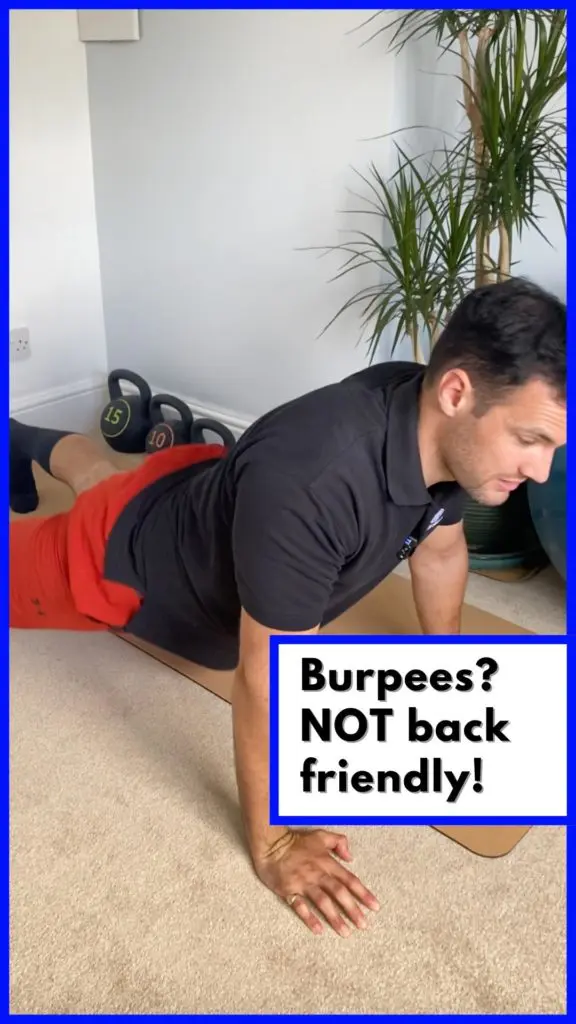
Are Lunges Good For Lower Back Pain
When we think about getting back in shape and rebuilding our body to make it more resilient, one of the important principles to adhere to, is that our exercises are somewhat applicable to daily life. What is meant by this, is that the exercises are similar to movements that might well be carried out on a daily basis. Now of course, it is one thing to get the movement right during your allotted “exercise time”, applying this same movement pattern outside this time is another thing. Lunges, much like squats covered in a previous article, are a vital movement and a natural progression from squats.
How can lunges help you develop a strong back?
Let us begin with the positive, the lunge is a natural advancement of the squat. It involves a multitude of joints and a need for a greater degree of body control. For starters, at ground level. Having one foot in contact with the ground as the primary ground interaction site, instead of two, means that we must have good foot control from the muscles of the lower leg. We must have control over our arch, and how we weight distribute through that foot. At the same time we are going to be asking more of the power muscles in our lower leg, the Gastrocnemius and the Soleus. These two muscles blend to form the common achilles tendon.
As we move up the leg into the knee, stability is further controlled here. During a lunge there is even more pressure for the knee to move to the midline than on a squat, so here stabilization at the level of the knee becomes a little more advanced. For example, not only do we have more load than a simple bodyweight squat, but we also have a need to counterbalance, without strength, control and awareness here, our knee can drive to the midline, creating real trouble.
Further up as we start to get into the “body” we have the hip, this strong joint and supporting muscles again have to manage the increased load, on top of this, the gluteal muscles in particular play a vital role in helping the two previously mentioned regions remain stable. Higher levels of participation of the gluteal muscles are needed to prevent the knee from rolling in as well as the arch of the foot from flattening – all problematic and even injury provoking movements! Above, the role of the hip with the core is to make sure that they work seamlessly to minimise excessive bending of the spine.
Feeding into the trunk, the core and lower back muscles. These must work intimately with the tension provided by the hip muscles so they have a strong stable anchor point. Without a degree of rigidity being developed in the trunk during the lunge movement, the strong lower limb muscles will not be able to generate power safely from a strong anchor point.
As we move up towards the head, the brain has to work overtime on balance, making sure the one sided nature of this movement is done in a way which keeps everything in check, especially when we begin. If we consider that there might also be additional load on the upper girdle, this further increases the overall “engagement” of the exercise.
Those of you reading this who’ve already delved into lunges as part of the program or otherwise, will be able to attest to the demand that these exercises will place on your muscles, but also when done successively, the cardiovascular system too.
Lunges are a natural evolution from squats and by adding in the requirement for balance and asymmetrical load, they begin to offer a different dynamic to our rehabilitation.
Lunges fill a need for realistic strain
Squats are fantastic and apply to many activities of daily living, lunges take it further. Much of our daily life is asymmetrical. We very rarely get to approach a load square on and set, ready to lift. The instances that often promote injury are done “at an angle” perhaps off balance, twisted, strained, with more pressure through one leg than the other. Although lunges do not put us in this degree of compromised position, they teach our body to start to get different muscle groups more intimately integrated with one another to form a mesh of support and complementary function allowing for smooth, strong, and effective motion, in the real world.
When we begin to explore lunges, having one side working differently to the other reveals inefficiencies in the way in which our core works to integrate asymmetrical limb involvement into the midsection. Often those strong lower limb muscles pull the back “out of alignment” and so strain the injured section of the lower back. If you do your lunges wrong, without proper poise, you’ll experience this.
You cannot avoid the need to lunge
Lunges aren’t easy, full, proper lunges anyway, and often when you start off with lunges, you might notice that there is a degree of discomfort, often in the knees or ankles. One of the disadvantages, especially with the long standing case of lower back pain is that we lose muscle mass. This is particularly noticeable in those with longer limbs. Now we’ve been through the process of lunging and all the moving parts in the earlier section you can perhaps see why this is so detrimental. As soon as we get into lunges, there just isn;t the appreciation for the complex task this is, and the requirement of strength to adequately protect the joints. This leaves many unfortunately falling into the trap of thinking they should avoid lunges.
Well good luck with that!
Are you not going to go up stairs again?
Are you going to stand floundering, helpless, stranded in the middle of the road because you cannot find a dropped curb to allow you to exit the road and return to the pavement?
Are you going to avoid going into your own home over the step in the front door, or never leave?
I understand this sounds a little harsh, but think about it, all of these movements are lunges to a degree, and you’re doing them, even going down into a cupboard under the sink might involve a mini lunge. If you’re struggling to do your lunges in a controlled environment when you’re doing your “exercises” what on earth makes you think you’re not doing the lunge in an extremely inappropriate manner during all these other times?
You can start from where you start with lunges
With the lunge, much like the squat, you have to begin where you begin, get the choreography, the engagement right even if you’re just bending the knee a fraction. We recently shot a video for our members on exactly how you can build these up safely. Everyone can get into lunges, but you must go at a pace that’s right for you. Even if that means standing up next to the counter, table or chair, on one leg, and bending your one knee by 10 degrees. You don’t need to start out with resistance, bodyweight only can be a necessary step for you to simply build the coordination required first if you struggle.
Once you have a safe range of motion, well choreographed, that you’ve watched back on a recording, you can begin to make progress with your lunges and do not rush yourself!
If you’re part of the membership, this week we’ve been running lungeweek and much like squatweek, it is great to see members sharing their videos for feedback. Lunges are harder to get right than squats, there’s a reason they come in Phase 3, so you can build on the more isolated components of spine stability learned earlier on in the Program. It is with feedback, from your own recordings and reflections and from our team helping guide you, that you can safely start building upright, load bearing strength in your back that is resistant to asymmetrical strains!
Comment of the week – Kasia
” I could finally understand what was going on and what I needed to do to move towards recovery.”
5 Steps to get into lunges safely for the hesitant among you or if you have knee or ankle problems!
A quick point on the latter, one could make the argument that your inefficiencies in a good lunge could well be a significant cause of these knee and ankle problems, in modern life these statements are becoming more and more true it seems.
- Supported without resistance to find your pain free lunge
Your first step should be to work, perhaps next to a chair, or table, for support, on simply load bearing on the one leg, and SLOWLY, slightly bending the knee as you slight the secondary leg backwards without any weight on this second leg. This is to say the front, bending leg takes all the load. This front leg should perhaps only bend 10 degrees or so. You’re looking for the ability to execute the movement with a zero to two out of ten pain and no more. Congratulations! You can do lunges, they’re not the best lunges but it doesn’t matter where we start, it’s how we progress that counts!
- Find your supported limit without resistance
Now you need to see how low you can go before one of two things happen, either your technique fails, or your pain kicks in, perhaps around two or three out of ten pain. This should be done with slow increments, for example, if bending the knee from 180 degrees (straight leg) to 170 degrees was pain free, you should look at 160 degrees, then 150 and so on, doing a couple of reps at each depth, interspersed with plenty of rest, maybe thirty seconds to a minute or so. Once you find this limit, back off by a few degrees and that’s your “starting level”.
- Graduate to no support
After practicing step 2 for a week or two, you can steadily work at the same depth, to remove the need for support. Remember that all of these lunges should be done slowly, and controlled. Your weight should always be born primarily by the front leg, the back leg should not be offering much more than token guidance during the movement.
- Add resistance to your lunges
Provided your technique and pain levels have continued to remain below that two or three out of ten leve, a good couple of weeks may well have elapsed since you moved to the “no support” model. Well done! You can now look to adding resistance to help strengthen the movement. This could be with bands, like we suggest in Phase 3 or weights (dumbbells or kettlebells). This will add an additional dynamic for you to progress with.
- Continue to progress with resistance & depth of your lunge
As time goes by, you should continue to make improvements in the resistances you’re using, as well as improving the depth you are going to during your lunges, just like the squats. This is a long process, months and arguably years to build your depth. And when it comes to resistance, you can continue to progress slowly for the long term. Do not try to make drastic changes, incremental improvement over the long term is the name of the game here and with perseverance you can transform your ability to do this movement. By extension, you’ll improve your knee, ankle, hip and lower back health as well as your cardiovascular health too!
Latest Video Release
Check Out The Latest Short Videos For Helpful Tips
Click the image to watch the short video on Instagram…













Responses